





Dr Lincoln Tracy
I hope everyone who attended the IASP World Congress in Amsterdam has well and truly recovered. Although I was watching from afar (online), it looked like it was an incredible opportunity to (re)connect with the international pain community and that a good time was had by all.
You can find a brief recap of the event from APS President Joyce McSwan in this edition of the eNewsletter. I was very excited to read that new IASP President Andrew Rice will be joining us for the ASM in Melbourne next year. I had the opportunity to interview Andrew in the lead up to the 2022 ASM in Hobart but was then unable to attend due to a positive covid test in my household – hopefully my luck will be better as our annual conference comes to my home state.
Also included this month is a reflective and thought-provoking piece on implicit bias from our Western Australian Director, Jacintha Bell, as part of the 2024 IASP Global Year About Sex and Gender Disparities in Pain. The strategies Jacintha suggests may sound simple – but they can have a significant impact on acknowledging and taking steps towards reducing potential biases as a clinician, regardless of the role you work in.
In addition, our Pain in Childhood Special Interest Group have three cracking journal watch submissions of recent papers from contributors that members will certainly be familiar with – Claire Ashton-James, Joshua Pate, and Melanie Noel. The reviewers provide their unique insight on the papers and their findings, so I encourage you to check them out even if you have already seen or read the studies in question.


Our travel grant recipient reports from the ASM in Darwin continue to be of outstanding quality, which highlights the importance of supporting the next generation of pain researchers to attend our events. The recent publications from Amelia Searle and Emily Walker are also a great read, and I encourage all members to share your recent work with our readership.
Social networking events are back as we move into warmer weather, so keep an eye out for the opportunity to catch up with old friends and meet new ones!
Until next time, Lincoln
Joyce McSwan
Dear APS Family,
I trust this message finds you well amidst the winter months.
This past year has marked significant growth for the APS, underscored by our dedicated volunteers who tirelessly support our multidisciplinary community of health professionals working in pain management. I extend my heartfelt thanks to all who contribute, both in significant and subtle ways, advocating for the importance of pain management in various forums—be it in workplaces, local advocacy efforts, educational settings, or patient care.
Since my last communication, I have attended several notable events:

• Participation in the 'State of the Nation' panel during National Pain Week, convened by Chronic Pain Australia on July 22, 2024.
• Attendance at the 50th International Association for the Study of Pain (IASP) Congress in Amsterdam from August 5-9, 2024, alongside thousands of pain professionals from across the globe.
• Chairing the Strategic Planning Review Meeting of the APS Board on August 17, 2024, focused on fortifying our organisational stance.

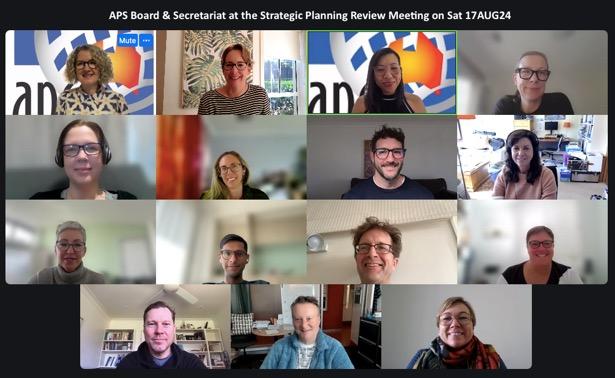

The IASP 2024 World Congress on Pain in Amsterdam was particularly enlightening, gathering over 5,000 scientists, clinicians, and healthcare providers united in the purpose to alleviate pain. It was particularly inspiring to meet the many Presidents of the Chapters of the IASP at a roundtable meeting reviewing the global need of pain and discussing some common challenges and solutions. We were privileged to hear from Nobel Prize Laureates Dr David Julius and Dr Ardem Patapoutian, whose groundbreaking research is paving new pathways in pain and arthritic disease treatment. Moreover, the transition of leadership within IASP, welcoming Professor Andrew Rice as President, has ushered in a promising era of innovation and collaboration.
Looking ahead, preparations for the APS conference in Melbourne in April 2025 are well underway, promising an engaging program highlighted by distinguished speakers such as Professors Tamar Pincus and David Bennett. I am so excited to announce that the President of the IASP, Professor Andrew Rice, will also be joining us in person!!
This month marked the launch of our pilot Mentoring Program, designed to enhance member benefits within the APS community. I commend the mentors and mentees who have enthusiastically embraced this initiative, and I eagerly anticipate its evolution based on their feedback.
In closing, I draw attention to the sobering insights from the 2025 National Pain Survey, revealing significant challenges in chronic pain management and access to multidisciplinary care. Together, we must redouble our efforts to improve these statistics and better serve those in need for better access to care.

I extend my sincere gratitude to our members whose unwavering dedication advances our collective pursuit of improved pain management. Let us continue our remarkable work with unity and resolve.
With appreciation,
Joyce McSwan APS President


Extended Deadline - Sunday 6 October 2024
Rising Star Award Applications Close
Tuesday 15 October 2024 Free Paper/Poster Abstract Submissions Close
Tuesday 19 November 2024 Registrations Open!
30 November 2024
All Travel Grant Applications Close
Save The Date
APS 2025 will be held from 13 - 16 April 2025 at the Pullman Melbourne Albert Park, VIC
Please visit the conference website here: www.dcconferences.com.au/aps2025
If you have any questions, please contact the APS Conference Secretariat: apsasm@dccam.com.au


This award showcases rising star pain researchers in Australia and may be awarded annually subject to the application of suitable candidates. The Rising Star Winner will receive a return domestic airfare, accommodation, and complimentary registration to attend the 2025 APS 45th ASM where they will give a plenary presentation to showcase their work and ideas.
Applications are now open, for further information and to apply, please click here.
This award will be based on excellence in pain research achievements. Applicants are asked to self-nominate and provide a one-page (A4, 12pt, Times New Roman) personal statement addressing the following criteria, with evidence:
• Track record, relative to opportunity (i.e., achievements rather than aspirations)
• Research Impact
• Leadership
Along with three (3) selected publications that reflect your most important research-related contributions. These may be from any stage of your research career. Each publication should be accompanied by a 200 word summary detailing what your contribution was, why you think the publication is important and what impact it has had. The applicant is also required to submit an abstract for their proposed plenary presentation. Abstracts must be 500 words or less, inclusive of title, author(s) names, and institutional affiliation(s) and references.
• Nominees must hold a PhD and be within five (5) years of the date on the official conferral letter from the awarding institution, by the deadline of this award application.
• Applicants can be working in any field of pain research.
• The selection committee will take in to account personal or extenuating circumstances that might provide grounds for consideration if the above eligibility criteria are not met.
• Only individual scientists are eligible (not research teams).
• Applicants must be available to attend APS 2025 in person to deliver the Rising Star presentation.
• Applicants must be a current member of the APS.
• An Australian citizen/resident, currently working in Australia and have spent at least two postdoctoral years in Australia, or have returned to continue working in Australia.
For further information and to apply, please visit the Rising Star Application Guidelines. We look forward to receiving your submission!

Submissions close: 11.59pm AEDT, Tuesday 15 October 2024
On behalf of the Scientific Program Committee and the Local Organising Committee, we are pleased to advise that abstract submissions for APS 2025 are now open.
Please note the following points regarding the submission process:
• If your abstract is accepted, either as a free paper or poster, there is an expectation that you will attend the conference to present this abstract
• Expressions of Interest (EOI) for travel grant applications are also being collected as part of the submission process
• The submitting author MUST be the main author and the person who will present the work at the ASM
To view the abstract submission guidelines please click here
There are THREE categories for Abstract Submissions.
Please visit these portals below:
Experimental Studies & Clinical Trials Abstract Guidelines
Clinical Practice & Service Delivery Abstract Guidelines
Case Reports Abstract Guidelines
EOI for Travel Grant Applications - APS Members only
Delegates wishing to apply for a travel grant must be the major contributor and submitting author of the abstract. Only delegates who have ticked 'yes' to the Travel Grant section of the abstract submission process AND completed the associated application form will be considered.
There are two travel grant opportunities available for APS Members. For further information on available APS travel grants and eligibility, please refer to the following webpages:
Travel Grants
Professor Michael Cousins AO Travel Grant - Allied Health Professionals only
We look forward to receiving your submissions. Should you have any queries regarding your submission or the process, please contact the Conference Secretariat.

Get in early and secure your place at Australia’s only multidisciplinary conference offering insights into the complex nature of pain management from a variety of medical, nursing, research, and allied health perspectives.
Complete the Expression of Interest form to be kept up to date with conference news as it becomes available.
Become a member and save on your APS 2025 registration fee!
Early Bird Register before 18 February 2025
Non-Member Registration Price VS
Becoming an APS Member
APS Student Member
Registration Price
$1,495 OR
Being a member saves you up to $420 after membership fees!
Only $300
Being a member saves you $1,130 after membership fees!
Tell your colleagues who are interested in becoming members so they can save on their registrations too!
Become an APS Member here
Should you have any queries about the conference, please contact the Conference Secretariat.
We look forward to welcoming you to the Pullman Melbourne Albert Park in Victoria next year.
The Board of Directors is seeking nominations from all Australian Pain Society (APS) members for candidates to be considered for the Distinguished Member Award(s) to be presented at the APS 45th Annual Scientific Meeting to be held in Melbourne from 13 - 16 April 2025.
Eligibility criteria:

Candidates must be APS members who generally have had a lengthy career in the field of pain and have:
• Made major contribution1 towards the Society, and
• Significantly contributed to the science of pain management, and/or
• Played a significant clinical, educational or research role in the field of pain management in Australia
1 Major contributions include, but are not limited to:
• Scientific Program Committee involvement
• Pain research
• APS projects
• Subcommittee involvement
• Board liaison
• Contributions to ASM presentations
Nomination Guidelines:
• A ‘Nomination for Distinguished Member Award’ form must be completed.
• As a guide, it is desirable that nominees have held continuous APS membership for over 10 years.
• Nominations must include an 800-900 word biography of the nominee. The Board will not consider incomplete nomination forms.
• Unsuccessful nominations are not automatically put forward in subsequent years.
• The nominator must be prepared to present a brief summary of the Distinguished Member biography in the ASM program, or arrange a suitable alternate for the presentation segment.
Submission:
• All nominations to be submitted to the APS Secretariat by 31 October 2024.
Notification:
• The APS Board will notify successful nominees by 31 December 2024
• Distinguished Member recipients are actively encouraged to attend the Annual Scientific Meeting in order to receive their award in person from the APS President.
The nomination form and a listing of past recipients of the Distinguished Member Award, including their biographies, can be found on the APS website.

The Australian Pain Society (APS) is pleased to announce the availability of several Travel Grants for members to present their research at our Annual Scientific Meeting (ASM).
Travel Grants are awarded as follows:
• PhD students (up to the value of $500)
• A single dedicated Travel Grant for a Pain in Childhood (PinC) SIG member ($500)
• A single dedicated Travel Grant for a Basic Pain Research (BPR) SIG member ($500)
• If funds permit, further travel grants may be offered to nurses, allied health professionals, and other post-graduate students.
This Travel Grant program is designed to encourage contribution to, and participation in, the ASM, and is made possible through an allocation of a capped pool of APS operating funds.
Full eligibility criteria and Terms and Conditions are available on the Travel Grants webpage.
In honour of Professor Michael Cousins AO, the APS is pleased to announce a single, dedicated Travel Grant for an allied health practitioner member to present their research abstract at our ASM.
The Professor Michael Cousins AO Allied Health Practitioner Travel Grant includes:
• Complimentary ASM registration at the relevant early bird rate
• $500 towards ASM travel and accommodation expenses
To be considered for any Travel Grant:
a. an EOI for a Travel Grant must be indicated when your abstract is submitted; AND b. a Travel Grant Application form must be submitted to aps@apsoc.org.au by 5pm on 30 November 2024 – no exceptions.
Monique Wilson
Monique is a third year PhD candidate with the Persistent Pain Research Group at the University of South Australia. Her work is centred around improving the clinical implementation of pain science education. She also works clinically as a musculoskeletal physiotherapist.
Author contact details: monique.wilson@mymail.unisa.edu.au
The APS travel grant gave me the opportunity to travel from Adelaide to Darwin to attend the 2024 APS Annual Scientific Meeting, marking the second time that I had attended this wonderful national conference. On arrival to Darwin, it was so lovely to see familiar faces and to reconnect with individuals that I had the pleasure of meeting the previous year in Canberra. Building on these connections really helped strengthen networks and pave the way for potential collaborations in the future. The number one thing I love about the APS conference is its welcoming and inclusive atmosphere!
I had a bit of a busier conference schedule this year which I was excited about. On the first day, I had the privilege of chairing a topical session on partnering with consumers in meaningful and respectful ways. Coordinating a group of speakers, helping facilitate an interactive activity, and overseeing question time was a great experience for me given I had not done this before. I then had the opportunity to present some of my own work as part of a Free Paper session. I presented a subset of findings from a nationwide online survey of Australian private practice physiotherapists, where we explored the barriers to the clinical implementation of pain science education (PSE). The findings


identified an array of barriers, including patients' lack of expectation for PSE as part of their physiotherapy treatment (suggesting the need to amplify patient awareness of PSE as a fundamental component of pain management) and that less clinical experience was associated with heightened apprehension for using PSE (highlighting the need for targeted training to equip newer physiotherapists with clinical skills to manage PSE optimally and confidently). This was my first time presenting at a conference, so despite some initial nerves, I was really pleased with how I spoke and was overwhelmed by how supportive and engaged the audience was. I found the question time very beneficial, prompting me to think on my feet and consider my work from many different perspectives.
Given the diverse array of work presented at this conference, I always leave the APS conference feeling very inspired and motivated. I loved the opening plenary from Dr Charlotte Elder, who shared powerful messages about the sex and gender disparities in pain. I also found the topical session on grant writing very useful and felt I could leave this session with quite a few takeaways to use in the future. As someone who is in the early stages of their research journey, the Trainee Session was also beneficial. I loved that this session was run in a more informal manner, giving us quality time with experienced researchers to fire questions their way.
With a heap of data collection currently underway, I am looking forward to hopefully having the opportunity to present more of my work at the APS Annual Scientific Meeting 2025 in Melbourne. I am very excited to see Professor Tamar Pincus as a keynote speaker, as I visited her lab in the UK in August. See you next year!
Declaration: Monique Wilson receives support from the Australian Government Research Training Program (RTP) Scholarship.
Dr Pene Wood (B.Pharm Hons MPS-AACPA PhD)
Community Health and Aboriginal Health Practice Pharmacist in Victoria (Deer Park and Geelong). Member of the IPC Health “Power Over Pain” multidisciplinary team. Amateur cyclist (Pain Revolution Outreach tour 2019, 2020, 2024). Special interest in opioids and their safe and appropriate use in pain management.
Author contact details: Penelope.wood@ipchealth.com.au
What a fantastic conference it was in Darwin this year. Great weather, great people, amazing speakers and presentations and plenty of opportunity for networking and potential collaborations!
This was my second APS conference but the first time having the opportunity to present some of the fantastic work my team is doing, which I may not have been able to do without receiving an APS travel grant. Our poster was titled “Power Over Pain: Is Care Coordination the Missing Ingredient?” And essentially, we think yes! It’s early days yet with our program but we think a point of difference from other programs in our area is the Wellbeing Coordinator (WBC) role we have embedded in our team. The WBC supports patients more with the psychosocial components of their pain experience and recovery journey, from attending appointments acting as an advocate, supporting access to financial support, helping fill out paperwork, to helping find a social group or network that is a good fit for them. And it is not only us who think this role is important, the clients we have interviewed thus far also agree. We had many visitors at poster number 103, both local and international, wanting to learn more about our program and how it worked and how they might implement such a program or role themselves within their own organisation.
I have enjoyed the APS conference the last two years for its interdisciplinary nature compared to other purely pharmacist conferences I have attended. It provides the opportunity to learn about other clinicians/professions roles and the great work that they are doing within these roles to support people living with pain. It provides a fantastic opportunity to catch-up with old friends and make new like-minded friends. But it still provides the opportunity to collaborate and explore what my pharmacist colleagues are doing in this space with the disciplinary specific meetings.


One of the highlights of the conference for me was the very engaging opening presentation by Dr Charlotte Elder – “Flipping the Script: Sex and Gender Disparities in Pain.” I loved her call to action for all of us to do better and it made me think about my own practice and any biases I may have and assumptions I make about women’s pain, especially pain labelled as endometriosis. This is especially relevant for us Victorians who were in the audience given the Inquiry into Women’s Pain that is going on in Victoria at the moment.
My second highlight (not pain related) was having the opportunity to arrive early and explore all that Darwin has to offer. The APS team do a great job organising the preconference tours and showcasing what the host city has to offer, being it tours of the local National Park or tasting of the local gin – both of which I partook in and thoroughly enjoyed. I think crocodiles might be my new favourite reptile! These pre and post conference events also gave me the opportunity to talk more intimately with some of the key-note speakers and superstars of the event including the amazing Tasha Stanton and international icon Cheryl Stucky about the fantastic work they are doing.
I am really looking forward to next year’s conference being on my home turf of Melbourne (in fact just down the road from where I live!). I am looking forward to building on the networks that I have started building both last year in Canberra and this year in Darwin and showcasing all this amazing city that I live in has to offer to our interstate and international visitors. And I’m not going to lie, not having to fly home at midnight, landing at 5am will be a big plus!
Declaration: Dr Pene Wood has received funding from Indivior for development and delivery of education materials in the past.

Developed by the Australian Pain Society in collaboration with the National Ageing Research Institute, this FREE ‘train-the-trainer’ pain management program is for use by sta in both residential aged care facilities and organisations that provide aged care in the community, as well as NDIS providers.
Eight (8) painACT modules: One for the trainer called “How to use the painACT trainer program”, and seven modules for the trainer to train their sta
Developed by the Australian Pain Society in collaboration with the National Ageing Research Institute, this FREE ‘train-the-trainer’ pain management program is for use by sta in both residential aged care facilities and organisations that provide aged care in the community, as well as NDIS providers.

Tuesday 22 October 2024, 10-11am AEDT (via Zoom)
The purpose of our Basic Pain Research Special Interest Group (BPR SIG) is to share, improve, and promote scientific knowledge and understanding of the mechanisms of nociception and pain across all levels of investigation, from molecular and cellular analyses to preclinical or clinical studies.
This forum will provide an informal platform to promote and share our research and insights, from early career researchers (ECRs; including students) and senior colleagues.

Session 11: Unravelling the Nervous System: High-Resolution Transcriptomics Insights in Pain Studies
Summary:
Join us for an online seminar exploring the cutting-edge use of high-resolution omics approaches in mapping pain pathways and signalling in the nervous system. Our expert speakers will delve into the latest techniques such as single-cell transcriptomics and ATAC-seq (Assay for Transposase-Accessible Chromatin with high-throughput sequencing), providing insights into the neural pathways that control pain signalling.
Through their research, our speakers have made significant breakthroughs in understanding the complex interactions between neurons, glial cells, and immune cells that contribute to pain perception. By leveraging high-resolution omics data, they are shedding light on novel therapeutic targets and potential biomarkers for pain diagnosis.
In this seminar, we will hear from two distinguished experts who will share their latest findings and discuss the future directions of research in this exciting field. Dr Will Renthal will be sharing his work in profiling the cell

types and states of chronic pain where his team has built cross-species harmonised atlases of dorsal root ganglion (DRG) and trigeminal ganglion cell types. These sensory ganglia reference atlases can guide future studies in comparative transcriptomics, simplify cell type nomenclature differences across studies, and help prioritise targets for future pain therapy development.
Dr Diana Tavares Ferreira works on understanding the underlying mechanisms of diabetic peripheral neuropathy, a prevalent complication of diabetes, to develop effective treatments. She will discuss the application of Visium spatial transcriptomics to DRGs from individuals with diabetic peripheral neuropathy history and sural nerves from diabetic patients, uncovering key neuronal subtype changes and non-neuronal cell interactions that underlie this prevalent complication.
The invited speakers:
• Dr Will Renthal, Department of Neurology, Brigham and Women’s Hospital and Harvard Medical School, USA
• Dr Diana Tavares Ferreira, School of Behavioral and Brain Sciences, University of Texas at Dallas, USA
All are welcome to attend, including postgraduate students.
Please be advised that the speakers and most of the audience will not have clinical or healthcare backgrounds. Therefore, they will not comment or provide advice about whether these findings can be translated into clinical setting, or about managing pain from a healthcare perspective.
We look forward to seeing you there, please register here.
Tuesday 19 November 2024, 12 - 1pm AEDT (via Zoom)
The purpose of our Basic Pain Research Special Interest Group (BPR SIG) is to share, improve, and promote scientific knowledge and understanding of the mechanisms of nociception and pain across all levels of investigation, from molecular and cellular analyses to preclinical or clinical studies.
This forum will provide an informal platform to promote and share our research and insights, from early career researchers (ECRs; including students) and senior colleagues.
Session 12: Advances in the visualization of neuronal activity in pain pathways
Summary:
Information about touch, temperature, itch, and pain is conveyed to the brain by sensory neurons located at a number of different levels of the nervous system, including the dorsal root ganglion and spinal cord. Traditionally, studies investigating sensory neuron function at these levels have been restricted to a single time point and/or small populations of cells, either during in vivo anaesthetised animal recordings, in vitro cultured preparations, or ex vivo isolated nerve preparations. These methodologies do not permit chronic recordings of large populations of sensory neurons over time, and they do not inform how sensory neurons behave in the awake condition.
This session will explore how the development of cutting-edge microscopy and geneticallyencoded sensors have led to recent advances in our understanding of sensory neuron function. Phill Bokiniec (University of Queensland) will describe a novel method that allows for the chronic investigation of sensory neuron

function in the awake mouse. By leveraging the genetic capabilities of the mouse, and advances in imaging from whole populations of neurons, he will show examples of how peripheral sensory neurons encode cutaneous innocuous temperature.
Feng Wang (Laval University, Canada) will describe the application of in vivo Ca2+ imaging of sensory neurons in the spinal cord to study their functions in both physiological and pathological conditions. He will show examples of key cellular mechanisms used by spinal cord sensory neurons to encode nociception and thermal sensation.

The invited speakers:
• Dr Phill Bokiniec, University of Queensland, Australia
• Dr Feng Wang, Laval University, Quebec, Canada
All are welcome to attend, including postgraduate students.
Please be advised that the speakers and most of the audience will not have clinical or healthcare backgrounds. Therefore, they will not comment or provide advice about whether these findings can be translated into clinical setting, or about managing pain from a healthcare perspective.
We look forward to seeing you there, please register here
Jacintha Bell, WA Director
Sex and gender bias in pain care impact the quality of care patients receive. As clinicians, it is up to us to recognise and address these biases to work towards patients receiving equitable treatment.


The International Association for the Study of Pain (IASP) has designated 2024 as the Global Year for Sex and Gender Disparities in Pain. This initiative aims to raise awareness about the differences in pain perception and treatment across genders and to address these disparities. In alignment with this global effort, it is an opportune time for clinicians to reflect on how gender bias might be influencing our own practices and take proactive steps to mitigate these effects.
Gender bias in clinical pain management often manifests in several ways, including the underestimation and undertreatment of pain in women and gender-diverse individuals compared to men. Research has shown that women’s pain is frequently misattributed to psychological causes, leading to delayed or inadequate medical treatment. For instance, women with chronic pain are more likely to be referred to psychological services rather than being offered appropriate pharmacological pain relief [1]. This bias also impacts gender-diverse individuals, who may experience barriers to accessing adequate care due to their gender identity not aligning with binary stereotypes used in pain assessment [2].
Studies highlight how clinicians may underestimate pain in female patients while overestimating it in male patients, even when self-reported pain levels are the same. A 2021 study found that despite women reporting comparable or higher levels of pain than men, they were less likely to receive aggressive treatment, and clinicians were more likely to prescribe psychotherapy over medication for women [3].
As a female health professional, I have been acutely aware of gender biases in healthcare. Interestingly, that doesn’t mean I’m not biased. My experience taking the Implicit Association Test (IAT) through Project Implicit (see further below) was eye-opening. Despite my commitment to gender equality, the test revealed that I, like many others, harbour implicit biases associating women with family and men with careers. For me, this experience underscored the importance of ongoing self-reflection and education to uncover and address implicit (and explicit) biases in clinical practice.
Project Implicit is a collaborative of researchers from Harvard University, the University of Washington, and the University of Virginia. It offers a range of online tests designed to help individuals identify their implicit biases. While there isn’t a specific test for gender bias in pain, the existing tests are a valuable starting point for clinicians to understand their own biases. I encourage my colleagues to visit Project Implicit and explore the resources available.
1. Acknowledge and reflect on your biases: The first step in addressing gender bias is recognising that it exists. Tools like the IAT can help clinicians identify unconscious biases. Self-reflection and open discussions with colleagues are helpful in understanding how these biases may influence clinical decisions.
2. Educate yourself and your team: Stay informed about the latest research on gender and sex disparities in pain. Regular team discussions and training can help to create awareness and foster a collective effort to minimise bias. Being accountable to each other, identifying when team members might be operating from a gender bias, and addressing it constructively are key to maintaining a bias-aware clinical environment.
3. Use evidence-based tools: Implement standardised, gender-neutral pain assessment tools in clinical practice. Develop guidelines and protocols that focus on minimising sex and gender disparities in pain treatment. Utilising these tools helps reduce reliance on subjective interpretations that may be influenced by implicit bias.
4. Advocate for systemic change: Advocate for updated clinical guidelines that reflect current understanding of gender and pain, ensuring these guidelines support all patients, including gender-diverse individuals. Pushing for policies that promote gender equity in healthcare can contribute to long-term improvements in patient outcomes.
Conclusion
Addressing gender bias in pain management is not just about improving individual patient care; it is about creating a more equitable healthcare system. As clinicians, we have the power to
influence change by reflecting on our biases, educating ourselves, and advocating for systemic improvements. By taking these steps, we can ensure that all patients—regardless of gender identity—receive the compassionate and effective care they deserve.
References
1. Samulowitz A, Gremyr I, Eriksson E, Hensing G. "Brave Men" and "Emotional Women": A theory-guided literature review on gender bias in health care and gendered norms towards patients with chronic pain. Pain Res Manag 2018;2018:6358624.
2. Fact Sheet: Sex/Gender Biases in Pain Research and Clinical Practice. International Association for the Study of Pain. 2024.

3. Zhang L, Reynolds Losin EA, Ashar YK, Koban L, Wager TD. Gender biases in estimation of others’ pain. The Journal of Pain 2021;22(9):10481059.
Would you like to be featured in an APS member spotlight?
Email the APS Secretariat (aps@apsoc.org.au) if you would like to complete a short interview to introduce yourself and your work to the broader membership.
Please join us for an Australian Pain Society (APS) social event!
Come along and catch up with your local APS colleagues and learn more about what other people are doing in your state.
In fact, if you have friends/colleagues with an interest in pain management but who are not members of the APS, why not bring them along too, so that they can connect with the APS community and find out more about how the APS can help support them.
The evenings will be largely unstructured so you can focus on meeting and connecting with others.
Hope you can make it!

6.00 – 9.00pm
Prince Lane Rooftop Bar
356 Murray Street, Perth
RSVP by 13 February 2025 here!

CANBERRA – THURSDAY 24 OCTOBER 2024
6.00 – 8.00pm
Verity Lane Market
50 Northbourne Avenue, Canberra
RSVP by 21 October 2024 here!
NSW, NT, & QLD events are being organised, more details to follow…



ADELAIDE – THURSDAY 7 NOVEMBER 2024
5.00 – 7.00pm
West Oak Hotel
208 Hindley Street, Adelaide
RSVP by 4 November 2024 here!

MELBOURNE – THURSDAY 7 NOVEMBER 2024
5.30 – 7.30pm
State of Grace Rooftop 27 King Street, Melbourne RSVP by 4 November 2024 here!
What health professionals need to know to answer your patients’ questions FREE Seminar!
4pm AEDT, Wednesday 06 November 2024 (via Zoom)



The Australian Pain Society (APS) is delighted to present Prof Suzanne Nielsen, Deputy Director of the Monash Addiction Research Centre in Melbourne, and Dr Pene Wood, a pharmacist specialising in pain and addiction, who will present on the new digital Opioid Safety Toolkit.

The Opioid Safety Toolkit was launched in August 2024 to increase consumer health literacy around prescription opioid safety. This interactive Toolkit, developed through extensive codesign with consumers and healthcare professionals, aims to encourage more open and informed conversations about opioid safety, and increase naloxone uptake among people who are prescribed opioids. This Toolkit will be widely disseminated over the next year, and it is likely your patients may have some questions about their opioids and naloxone. This seminar will provide you with a background on the Toolkit and naloxone, including an overview of some of the clinical screening and opioid outcome tools that are included, to help you answer these questions.
This lecture is suitable for health professionals only.
There will be a 45 minute presentation followed by a 15 minute Q&A session.
The session will be moderated by Mrs Joyce McSwan, APS President.
Places are limited, we look forward to seeing you there!
PLEASE RSVP HERE
Resources for consumers are available here
4pm AEDT, Wednesday 13 November 2024 (via Zoom)




Dr Bronwyn Thompson
The Australian Pain Society (APS) is delighted to introduce:
Pete Moore – Author/trainer and originator – Pain Toolkit UK
Dr Bronwyn Lennox Thompson – Clinical Senior Lecturer, Department of Orthopaedic Surgery & Musculoskeletal Medicine, University of Otago, Christchurch, New Zealand
Dr Chris Hayes – Pain Medicine Physician, John Hunter Hospital’s Integrated Pain Service, Newcastle, Australia
All three presenters have many years of pain self management experience and will explain what ‘supported pain self management’ is and how it can help patients get back in the driving seat and back on track.
Pete says… “Going by the many conversations I had with numerous healthcare professionals at the 2024 IASP World Congress on Pain in Amsterdam last August, ‘supported pain self management’ has become a hot topic and many educational courses for healthcare workers are now springing up in Australia and around the world.”
This seminar is suitable for both health professionals and people with lived experience of persistent pain.
There will be a 45 minute presentation followed by a 15 minute Q&A session.
The session will be moderated by Ms Bernadette Smith, APS President-Elect.
Places are limited, we look forward to seeing you there!
PLEASE RSVP HERE

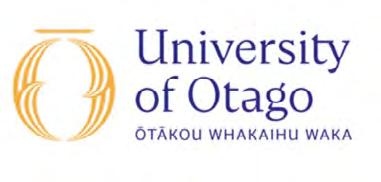

Kapos FP, Craig KD, Anderson SR, Bernardes SF, Hirsh AT, Karos K, Keogh E, Reynolds Losin EA, McParland JL, Moore DJ, and Ashton-James CE. Social Determinants and Consequences of Pain: Toward Multilevel, Intersectional, and Life Course Perspectives. The Journal of Pain (in press).
DOI: https://doi.org/10.1016/j.jpain.2024.104608
Reviewer: Lord SM. Specialist Pain Medicine Physician, Children’s Complex Pain Service, John Hunter Children’s Hospital, Newcastle, Awabakal Country, NSW, Australia HNELHD-CCPS@health. nsw.gov.au
Review of article
the unique contributions of social contexts and social consequences of pain.
The authors present their explanatory framework (visual thinkers should see Figure 2) which situates the intrapersonal experience of pain in the centre, inseparable from and interacting with the person’s social world. Components of the framework included:
• Intrapersonal dimension – Conceptualised as the biological and psychological systems that allow for adaptation to social cues about threats to integrity and hence pain at the individual level. They give examples of modulation of pain experience by cognitive, affective, behavioural, and physiological processes.
Aim

1) To examine the broad scope of social aspects of pain – determinants and consequences, and
2) To provide a framework inclusive of existing concepts, as a scaffold for future work on social aspects of pain.
Study Method
This is a field-(re)defining, theory-informed review. The authors provide theory –socioecological, intersectional, and life course approaches are drawn upon – as a framework for organising and integrating existing academic evidence and mapping proposed future directions. The framework is substantiated through key examples from the existing literature. Because this is not a systematic review, the authors did not report their literature search strategy. Children and young people are neither excluded nor the focus.
Summary of Results
The authors first situate the work within the biopsychosocial understanding of pain. A new framework is needed to rectify the unfortunate habit of conflating ‘psychosocial’ aspects at the expense of recognising and responding to
• Multilevel social determinants –
- Interpersonal relationships with others shape a person’s experience of pain through comparisons, modelling, support or exclusion, empathy, or conflict.
- Group-level determinants fall into four types: intimacy groups (e.g., household), task groups (e.g., workplace), social categories (e.g., gender, marginalised identities), and loosely associated groups (e.g. neighbourhood group). Group membership can shape prevention and experience of pain and its management.
- Societal-level structures such as political, economic, and cultural systems determine distribution of power and resources between groups and individuals, and therefore determine risk and protective factors for pain.
• Multilevel social consequences – Similarly, the authors map existing evidence to interpersonal, group-level, and societal levels, rendering complex concepts relatable.
• Life-course perspective is woven through the model. Examples articulate how history, relationships during development and
intergenerational learning cumulatively impact pain experience, as both determinants and sequelae.
• Intersectional systems of inequity (e.g., racism, sexism, classism) shape each person’s experience according to their social positions in relation to various attributes, real and perceived.
Key examples from the (mostly-Western-highincome-country academic) literature are used to demonstrate what is known so far about social determinants and consequences of pain. The reference list serves as a preliminary curriculum for this field.
Authors’ conclusions
Biological and psychological contributors to pain have been historically prioritised over social factors in pain research, education, assessment, and management. However, people with pain ‘do not live in a vacuum’ – they are immersed in social roles, relationships, community dynamics, and societal systems, all of which can act as barriers and facilitators to pain relief, function, and quality of life.
Filling the social gaps in the biopsychosocial framework is a critical step toward improving pain assessment and care. The authors advocate for: improved focus on and measurement of social aspects of pain; lived-experience voice and interdisciplinary collaboration; and inclusive and equity-minded research.
Critique
This theory-informed review is gold; it lays the groundwork for improving our understanding of pain, its prevention, and treatment.
Author positionality can skew framing of theory, (non-systematic) selection of literature,
and conclusions. The omission of an author statement implies an assumption of impartiality. However, the focus on the last 100 years and on individual-centred versus collectivist approaches, suggest a Western academic lens. Learnings from collective experiences of pain and social healing practices of First Peoples would be an important addition to the next iteration.
The authors acknowledge that people with lived-experience of pain had not directly informed the framework to date but highlight the importance of lived-experience and interdisciplinary voices going forwards.
Children and young people are included to some extent, but examples of child-centred task groups would enhance this evolving framework. Parallels exist between the workplace and school-based literature with respect to expectations of activity, sense of control, satisfaction, social support, and bullying.

The paper necessarily focusses on pathways of causation and interaction, with less emphasis on remedial actions. Arguably it is time for our field to consider also the action infrastructure i.e. investing in people with social work skills and growing these skills amongst all clinicians.
‘Take-home’ Messages
• Patients don’t exist in a social vacuum – use an inclusive, trauma-informed approach to assess their social context.
• The social outcomes of pain can become social determinants of future pain.
• Ultimately, changing societal-level determinants of pain will require advocacy and social structure transformation.
Fechner R, Verhagen A, Alcock M, Norton J, Stubbs PW, Harrison LE, & Pate J W (2024). The Effectiveness of Pain Science Education on Caregiver and Children’s Knowledge, Beliefs, Attitudes, and Behaviours—A Systematic Review and Meta-Analysis. The Journal of Pain; 25(9): 104578.
DOI: https://doi.org/10.1016/j.jpain.2024.104578
Reviewer: Amy Wethered, Clinical Nurse Consultant, Children’s Complex Pain Service, John Hunter Childrens Hospital, Newcastle, NSW Australia HNELHD-CCPS@health.nsw.gov.au
Review of article
Aim
To systematically evaluate the effectiveness of pain science education (PSE) compared with any control interventions on improving knowledge, beliefs, attitudes, and behaviours related to pain among children and their caregivers. The authors sought to provide a synthesised view of the available evidence.
Study Population
The study population included children (0-18) without pain (preventative trials) or with acute or chronic pain (treatment trials) and /or their adult caregivers (e.g., parents, grandparents, teachers, support workers).
Study Method
The authors employed a systematic review and meta-analysis approach, searching five databases for relevant articles from inception to May 2023. The inclusion criteria encompassed randomised controlled trials conducted in clinical, community, and laboratory settings. The minimum criterion for defining PSE was that it must include information addressing the biological processes underpinning pain.
Trials were excluded if concurrent interventions made it impossible to isolate the effects of PSE. Only full-text articles in English, German,
or Dutch were considered. Where data could be pooled, a meta-analysis was performed to integrate results, and the risk of bias was assessed using the Cochrane Risk of Bias 2 tool.
Summary of results
• Of 14,505 studies screened, seven met inclusion criteria, involving 351 caregivers and 1,285 children (most without pain).
• Caregiver knowledge and beliefs: They found low-certainty evidence that PSE has a large beneficial effect on caregiver knowledge and beliefs in pain prevention and management compared to control interventions.

• Caregiver attitudes and behaviours: There was very low certainty evidence for no effect of PSE on caregiver attitudes, and very low certainty for equivocal effect on caregiver behaviour.
• Children’s knowledge and beliefs: Metaanalysis was not possible. Narrative review showed very low certainty evidence that PSE can positively influence children’s knowledge and beliefs in both healthy children and adolescents with chronic pain.
• Children’s attitudes and behaviours: Narrative review found very low certainty evidence of a small difference in pain-related attitudes immediately post-PSE but no benefits at six-month follow-up. There was also very low certainty evidence of no change in children’s behaviour i.e., no change in their functional disability, school and sport participation, or healthcare and medication use.
Authors Conclusions
The authors concluded that although PSE holds theoretical promise in improving painrelated knowledge, beliefs, attitudes, and potentially behaviours, the available evidence in children and caregivers is limited, and of low and very low certainty.
They advocate for further high-quality research to strengthen preliminary findings and address existing gaps. They suggest future research should consider the social influence of caregivers on children’s conceptualisation/ reconceptualisation of pain and the importance of developmentally sensitive and validated outcome measures.
Critique
Strengths:
• This review is comprehensive, covering a wide range of outcomes (knowledge, beliefs, attitudes, and behaviours) and providing a holistic view of PSE effects.
• The meta-analytic approach enhances the reliability of the findings by aggregating data from multiple studies.
• Inclusion of diverse populations and pain conditions enhances the generalisability of the findings.
Limitations pertain to the source studies:
• The studies reviewed lack of sufficient data on long-term effects, making it hard to determine the sustainability of any observed benefit.
The authors acknowledge the need for further exploration of contextual factors (e.g., cultural, socioeconomic) that may influence the outcomes of PSE, which could affect the realworld applicability of the findings.
Take home messages
• PSE holds promise in enhancing knowledge and shifting beliefs and attitudes toward pain in children and caregivers.
• More high-quality, long-term studies are needed to strengthen the evidence base and address current limitations.
• Future research should consider contextual factors and explore diverse populations to improve the real-world application of PSE.
Declaration

• The high heterogeneity in terms of design, populations, interventions, and outcomes complicates the drawing of definitive conclusions.
• Many of the studies included in the review were of low to moderate quality, with methodological weaknesses such as small sample sizes, lack of randomisation, and short follow-up periods.
The reviewer declares no competing or conflicting interests in reviewing this article.
Tutelman PR, Noel M, Bernier E, Schulte FSM, & Kopala-Sibley DC. (2024). Adverse Childhood Experiences Moderate the Relationship Between Pain and Later Suicidality Severity Among Youth: A Longitudinal High-Risk Cohort Study. The Journal of Pain; 25(9): 104554.
DOI: https://doi.org/10.1016/j.jpain.2024.104554
Reviewer: Wong SW, Clinical Psychology Registrar, Children’s Complex Pain Service, John Hunter Children’s Hospital, Newcastle, Awabakal Country, NSW, Australia.
HNELHD-CCPS@health.nsw.gov.au
Review of article

Aim
To examine the role of adverse childhood experiences (ACEs) in moderating the relationship between pain and the onset and severity of suicidality in adolescents at risk for developing mental health problems.
Study Group
The study involved 139 adolescents (ages 11-17), recruited through social media and clinics in Canada, with eligibility based on having a parent with a history of depression or anxiety.
Study Method
Longitudinal study collected data at baseline, as well as at nine- and 18-month follow-ups.
Youth completed self-report measures of internalising symptoms (i.e., depressive, anxiety, and somatic symptoms), ACEs, and chronic pain presence at baseline, pain intensity, and interference. Suicidality onset and suicidality severity were assessed at follow-up interviews.
Summary of Results
Descriptive statistics and bivariate correlations: Of 139 participants, 24% reported
chronic pain, 61.15% had one or more ACEs, 10.7% reported 4 or more ACEs, and 32% experienced suicidality at follow-ups. Higher levels of ACEs, pain interference, and pain severity were related to suicidality onset and severity.
Predicting Suicidality Onset: Sex and age were unrelated to suicidality onset, but increased internalising symptoms at baseline were associated with a 3.4-fold higher risk of suicidality. Beyond internalising symptoms, greater pain interference and severity predicted a higher risk of suicidality onset.
Predicting Suicidality Severity: In the chronic pain model, increased baseline internalising symptoms predicted greater suicidality severity, but chronic pain status (yes/no) and ACEs did not have a significant direct impact on suicidality severity. In the pain interference model, both baseline internalising symptoms and pain interference were linked to higher suicidality severity, while ACEs were not independently contributed to the severity of suicidality when considering the effects of baseline internalising symptoms and pain interference. The pain intensity model showed increased ACEs were associated with higher suicidality severity, but baseline internalising symptoms were not.
Moderation analyses: The association between pain interference and suicidality severity was stronger in individuals with high ACEs. This means for those with high levels of ACEs, increased pain interference was strongly associated with higher suicidality severity, while pain interference did not have a significant effect on suicidality severity in the low ACEs group. Moreover, increased pain intensity was linked to higher suicidality severity in youth with high ACEs. This indicated that for individuals with high ACEs, higher pain intensity was strongly associated with more severe suicidality, while pain intensity does not significantly impact suicidality severity for those with low ACEs.
The findings highlight the importance of considering pain, even before it becomes chronic, alongside early life trauma, given the moderating role of ACEs in the relationship between the interference and intensity of pain and suicidality. Pain severity and its impact on daily life, rather than its duration, may better predict suicidality, emphasising the need for research and intervention in paediatric and mental health care.
This study provides valuable insights into the complexity between pain, early life trauma, and suicidality in youth, emphasising the role of ACEs as a significant moderating factor. Strengths of this research include its longitudinal design, which incorporates followup assessments using structured diagnostic interviews to accurately measure the onset and severity of suicidality.
The authors acknowledge a significant limitation: the lack of racial and socioeconomic diversity within the sample, which may underestimate the nature and magnitude of ACEs and their relationship with pain and suicidality. This insight is particularly relevant for future studies in multicultural countries like Australia, where it is essential to examine specific cultural interactions, especially among Aboriginal and Torres Strait Islander communities, who may experience unique forms of structural violence, trauma, and pain.
Positive Childhood Experiences (PCEs) were not measured. Recent research1 has shown that PCEs reduce chronic pain prevalence among children exposed to ACEs. Future research could examine the moderating role of PCEs in the relationship between pain, ACEs, and suicidality.
The study’s findings have significant implications for clinical practice, for both mental health and chronic pain management services. Allocating more resources to reduce waitlists and ensure timely access to care can help lessen the impact of pain and mental health issues on individuals and their caregivers. Additionally, integrating parental counselling and pain education into community programs could further alleviate these challenges, offering enhanced support to both individuals and their families.
• ACEs play a moderating role in the relationship between pain and suicidality, with pain interference and intensity predicting higher suicidality severity predominately in youth with a high number of ACEs.

• The impact of pain on daily life is a critical factor in the development of suicidal ideation, highlighting the need for early targeted interventions in paediatric and mental health care.
• Specialist pain management teams should consider allocating more resources to reduce wait-time for pain care or, where resources are limited, prioritise individuals with high ACEs.
Declaration
The reviewer declares no competing or conflicting interests in reviewing this article.
References:
1. Pugh, S. J., Murray, C., & Groenewald, C. B. (2023). Positive Childhood Experiences and Chronic Pain Among Children and Adolescents in the United States. The journal of pain, 24(7), 1193–1202. https://doi.org/10.1016/j. jpain.2023.02.001
The Australian Pain Society (APS) is keen to share publications from our members with their colleagues via our eNewsletter. If you’ve had an article accepted or published recently, please contact our Assistant Editor Joanne Harmon via the APS Secretariat (aps@apsoc.org.au) with the title, authors, and reference (i.e., journal, volume, and DOI) of your article and request the submission template. We would love it if you also supply a short commentary (300 words max) to give our readers the gist of the article.


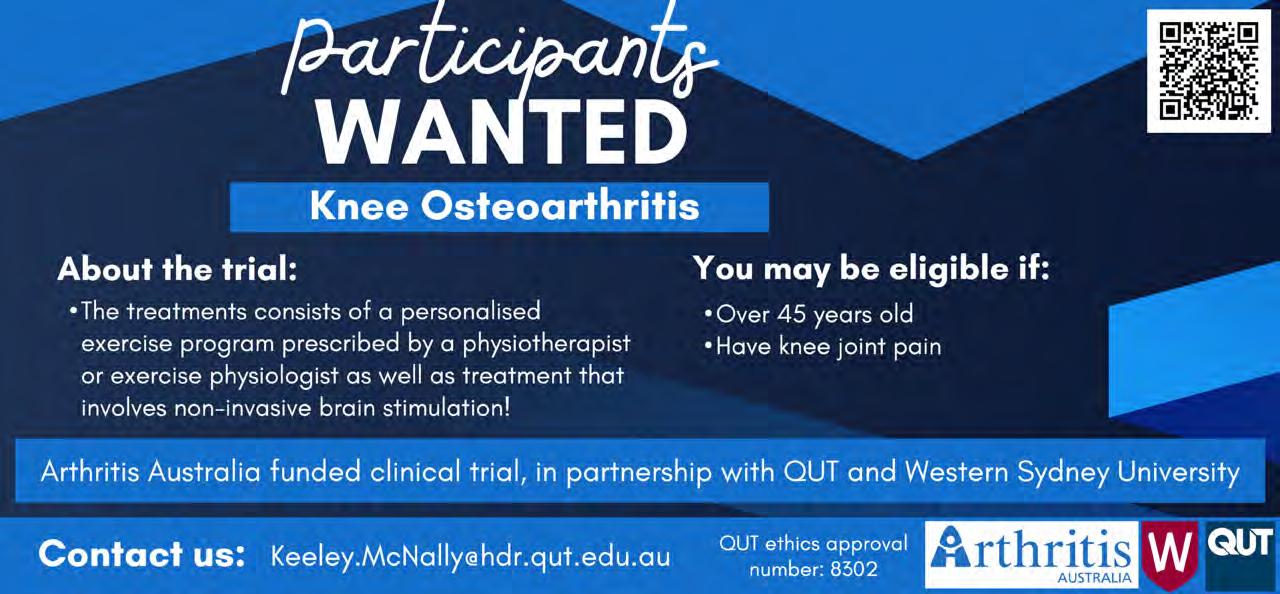
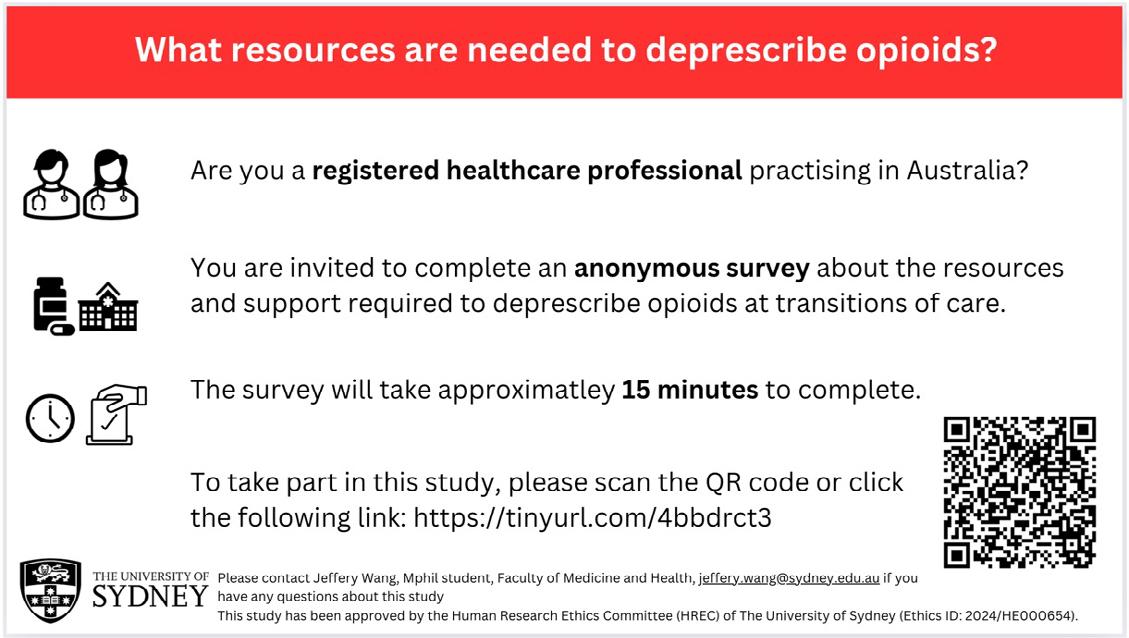
Thank you to APS members Cindy Wall and Amelia Searle and their colleagues Lauren Kardash and Mal Flack for sharing the following recent publication.
Article first published online: 23 May 2024
Journal Reference: Kardash L, Wall CL, Flack M, & Searle A. (2024). The role of pain self-efficacy and pain catastrophising in the relationship between chronic pain and depression: A moderated mediation model. PLoS One, 19(5), e0303775.
DOI: https://journals.plos.org/plosone/ article?id=10.1371/journal.pone.0303775
Abstract
Introduction
Methods
Participants completed a baseline survey at their intake to the Pain Unit from January 2019 to March 2022. Surveys were administered as part of the Electronic Persistent Pain Outcomes Collaboration (EPPOC), which included measures of pain severity and interference (BPI), pain self-efficacy (PSEQ), pain catastrophising (PCS) and depression symptoms (DASS21 depression subscale). The proposed moderated mediation model was tested in a single model using the SPSS PROCESS macro (predefined model 59).

Chronic pain is a substantial health problem with a high prevalence of comorbid depression. To understand the link between chronic pain and depression, cognitive factors including pain catastrophising and pain self-efficacy have been theorised as significant contributing variables. There is relatively strong evidence that pain catastrophising mediates the relationship between pain severity and depression symptoms. There is also emerging evidence that the mediation role of pain catastrophising may vary as a function of pain self-efficacy. However, it is unknown whether this model will apply in a tertiary pain clinic sample. Thus, this study aimed to examine the respective moderating and mediating roles of pain self-efficacy and pain catastrophising on the association between pain severity and depressive symptoms in a large clinical sample of Australian adults living with chronic pain.
Design
A retrospective cross-sectional analysis of clinical registry questionnaire data.
Subjects
Participants (n = 1195, 66% female, mean age of 52.69 years) were adults experiencing chronic noncancer pain and referred to a tertiary pain service (the Flinders Medical Centre Pain Management Unit in South Australia).
As expected, the PROCESS path analysis showed that there was moderate positive relationship between pain severity and depressive symptoms (r = .30), and this relationship was fully mediated by pain catastrophising (β = .618, CI [.497, .741]). Further, there was support for the moderating effect of pain self-efficacy; as pain self-efficacy decreased, the positive relationships between pain severity and pain catastrophising (β = -.034, CI [-.062, -.007]) and pain catastrophising and depressive symptoms (β = -.003, CI [-.005, -.001]) both strengthened.
Cognitive factors of pain catastrophising and pain self-efficacy have a significant role in the relationship between chronic pain severity and depression. Results supporting aspects of the proposed model suggest that prospective research into the potential protective role of pain self-efficacy is needed. These findings may have important clinical implications including the potential benefits of identifying problematic levels of pain catastrophising and pain self-efficacy early through triage processes. Early identification may be beneficial in informing targeted interventions. As the characteristics of our participants are consistent with the national specialist pain service demographic profile, findings may also have important implications for the national clinical chronic pain population.
Declaration: All authors have no conflicts of interest to disclose.
clinicians’ experiences and systemic challenges in the implementation of evidence-based practice for chronic low back pain –a qualitative study
Thank you to APS members Emily Walker and Andrew Natoli, and their colleagues Mitchell Gibbs and Matthew Jones for sharing the following recent publication.
Article first published online: 13 July 2024
Journal Reference: Walker ED, Gibbs MT, Natoli AR, & Jones MD (2024). Navigating complexities: clinicians’ experiences and systemic challenges in the implementation of evidence-based practice for chronic low back pain – a qualitative study. Disability and Rehabilitation, 1–11.
DOI: https://doi.org/10.1080/09638288.2024.237
8371

Abstract
Background
Implementation of evidence-based practice (EBP) for chronic low back pain (CLBP) is poor. This study aimed to investigate the factors that influence exercise-based clinicians’ implementation of EBP for people with CLBP.
Design
A qualitative study.
Methods
Before study participation, clinicians completed a questionnaire which gathered data about demographics, continuing professional development, biomedical/biopsychosocial beliefs and two vignettes. This data was analysed using descriptive statistics. The study’s research question was addressed through a critical realist ontological perspective and incorporated elements of a constructivist epistemology. Semistructured interviews were conducted with 40 clinicians (20 physiotherapists and 20 accredited exercise physiologists). Interviews explored clinicians’ definition of EBP, understanding of EBP in CLBP management, barriers and enablers to EBP, and the impact of these factors on EBP implementation. Interviews were analysed using reflexive thematic analysis.
Results
A complex interplay among clinician factors, systemic factors, and patient interactions was identified. Clinicians encountered challenges stemming from their misconceptions about EBP, which influenced their perspective(s) on its implementation. Clinicians expressed the challenges of implementing EBP when navigating patient expectations and beliefs, experiencing external pressures from funders and business models, and the subsequent impacts on their well-being. Continuing professional development, support from community, and workplaces that prioritised EBP enhanced clinicians’ ability to make decisions that accommodate for the complexities of CLBP and better align with EBP.
Conclusions
A variety of factors and their interconnected dynamics impact exercise physiologists’ and physiotherapists’ implementation of EBP. Similarities in these factors between the two professions suggest systemic influences outweigh profession-specific influences. To improve the implementation of EBP, both clinician factors and deeper systemic factors must be addressed.
Implications/Discussion
• The interplay among clinician, patient, and health system/structural level factors affects exercise-based clinicians’ implementation of EBP for CLBP.
• Clinicians are well positioned to identify issues in clinical practice and initiate appropriate changes that could improve EBP.
• Educational institutes, funders, businesses, and policymakers can all play a role in enhancing exercise-based clinicians’ engagement in and implementation of EBP.
Declaration
Emily Walker has nothing to declare.





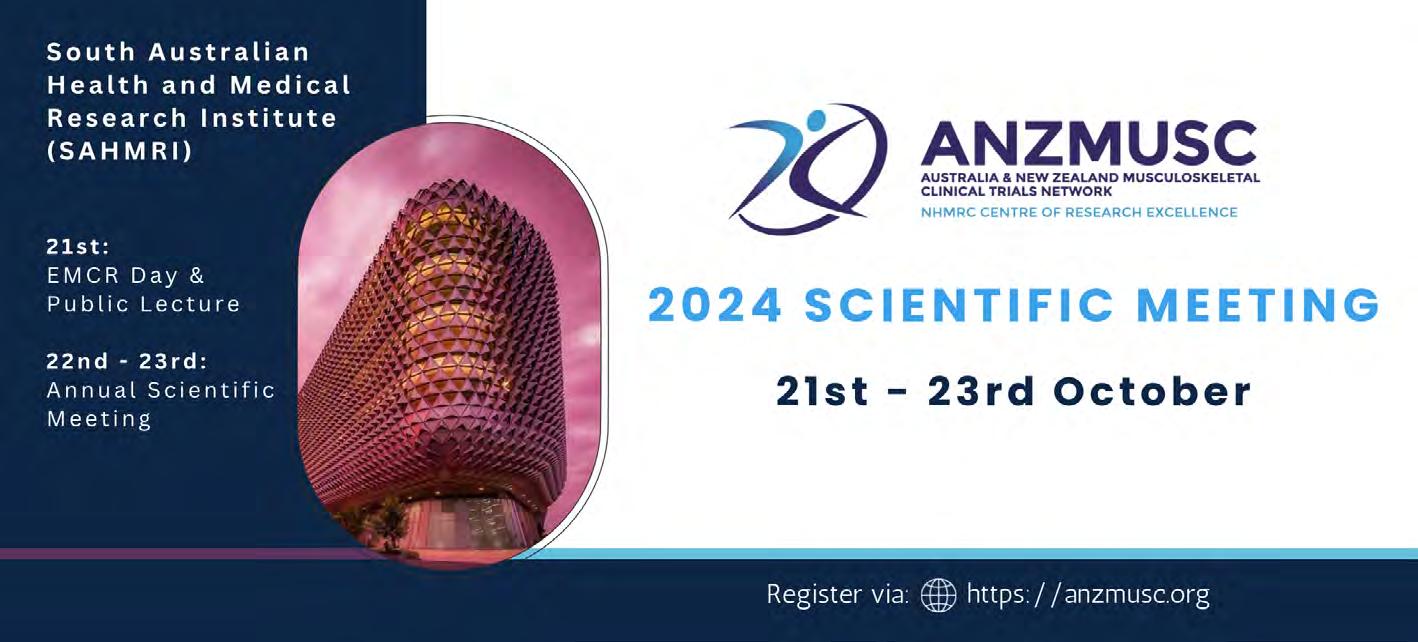


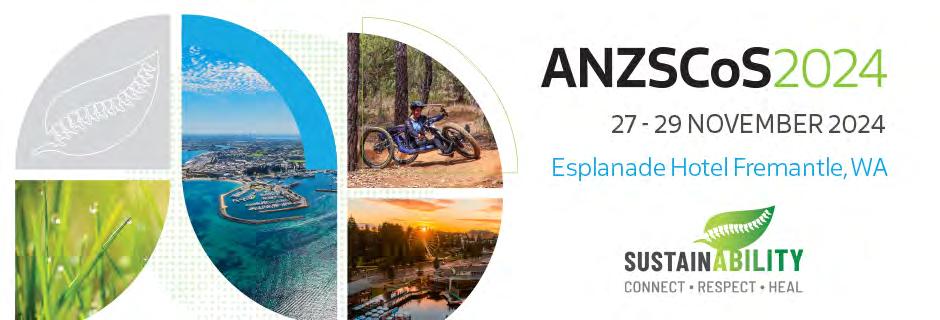



New Members as at 23 September 2024
Dr Ian Dummett Acupuncture
Miss Pauline Jubin Science Research
Mrs Kate Merritt Occupational Therapy
Prof Richelle Mychasiuk Science Research
> Painaustralia - expert answers to common questions about spinal cord stimulation
Other items of interest for our members:
> Latest opioid data from the Australian Bureau of Statistics: Opioid induced deaths in Australia.
> Australia’s annual overdose report 2024 from the Pennington Institute
> Opioid Podcasts for GPs: These podcasts are produced by David Outridge GP, and FAChAM Trainee as a project under the auspices of Dr Steven Kelly Staff Specialist in Addiction Medicine, Kullaroo Clinic Gosford. A weekly series from the Hunter Postgraduate Medical Institute (University of Newcastle)
> Airing Pain: Pain resources via an online radio show produced by Pain Concern, a UK registered Charity
> Indigenous Resources: Webpage on the APS website aggregating Indigenous resources

> Australian Atlas of Healthcare Variation Series: This series explores how healthcare use in Australia varies depending on where people live. It investigates reasons for variation that may be unwarranted, and provides specific achievable actions to reduce unwarranted variation
> Painaustralia eNewsletters
> ePPOC: electronic Persistent Pain Outcomes Collaboration: The electronic Persistent Pain Outcomes Collaboration (ePPOC) is an Australasian initiative that aims to improve the quality of care and outcomes for people who experience chronic pain.
> PainHEALTH: painHEALTH‘s aim is to help health consumers with musculoskeletal pain access reliable, evidence-based information and tips to assist in the co-management of musculoskeletal pain. painHEALTH is an initiative of the Department of Health, Western Australia
> Stanford University CHOIR: CHOIR Collaborative Health Outcomes Information Registry
TGA
> Codeine information hub
NSW Agency for Clinical Innovation resources:
> Brainman and Pain Tool Kit translations
> Pain Management Resources
> Quicksteps to Manage Chronic Pain in Primary Care
> Built into Quicksteps: “How to de-prescribe and wean opioids in general practice”
> A list of helpful apps for consumers and clinicians
> Chronic Pain in the ED
18 October 2024
Pain Nurses Australia
2024 Annual Professional Day: Shades of Pain & Trauma
Rydges South Bank, Brisbane, QLD
18-20 October 2024
Faculty of Pain Medicine (FPM)
2024 FPM Spring Meeting
Pullman Auckland Hotel & Apartments, Auckland, NZ
21-23 October 2024
Australia & New Zealand Musculoskeletal
Clinical Trials Network
ANZMUSC 2024 Scientific Meeting
South Australian Health and Medical Research Institute (SAHMRI), Adelaide, SA

31 October-2 November 2024
Australian Physiotherapy Association
FOCUS24: The business of physiotherapy
Crown Perth, Perth, WA
14 November 2024
Kolling Institute
Kolling Research Symposium 2024
Northside Conference Centre, Sydney, NSW
21-23 November 2024
Royal Australian College of General Practitioners (RACGP)
GP24
Perth Convention & Exhibition Centre, Perth, WA
27-29 November 2024
Australian & New Zealand Spinal Cord Society (ANZSCoS)
ANZSCoS 2024
Esplanade Hotel, Fremantle, WA
20-22 March 2025
New Zealand Pain Society (NZPS)
NZPS25 - Weaving our Kete
Te Papa Tonogarewa, Wellington, NZ
13-16 April 2025
Australian Pain Society (APS)
2025 Australian Pain Society 45th Annual Scientific Meeting
Pullman Melbourne Albert Park, Melbourne, VIC
20-23 July 2025
Rehabilitation Medicine Society of Australia & New Zealand in conjunction with New Zealand Rehabilitation Association
RMSANZ NZRA 2025 8th Annual Scientific Meeting - Building Lives
Te Pae Christchurch Convention Centre, Christchurch, NZ
Vision:
All people will have optimal pain management throughout life.
Purpose:
The Australian Pain Society is a multidisciplinary association whose purpose is to advance pain management through education, research, and advocacy for transformational improvements in clinical care.
Priorities:

In order to achieve our purpose, the Australian Pain Society will provide:
> Membership
> Research
> Education
> Services and resources
> Good governance and operations
> Advocacy







President:
Mrs Joyce McSwan
Gold Coast Primary Health Network
Persistent Pain Program, QLD and PainWISE
Tel: 0412 327 795 Fax: 07 3539 9801
President-Elect:
Ms Bernadette Smith
Psychology Plus
South Burnie TAS
Tel: 03 6431 9959 Fax: 03 6431 9950
Secretary:
Mrs Dinah Spratt
Physiotas Physiotherapy
Shearwater TAS 7307
Tel: 03 6428 7500 Fax: 03 6424 7811
Treasurer:
Dr Laura Prendergast
Pain Service, Northern Health
Broadmeadows VIC 3047
Tel: 03 8345 5166 Fax: N/A
Work days Mon & Thu
ACT Director:
Dr Andrew Watson
Calvary Hospital
Canberra ACT 2617
Tel: 02 6201 6352 Fax: N/A
NSW Director:
Mr Connor Gleadhill
Department of Health and Aged Care
Primary Care Division
Newcastle NSW 2038
Tel: 0405 203 661 Fax: N/A






NT Director:
Adjunct A/Prof Cindy Wall
Charles Darwin University
Darwin NT 0800
Tel: 0488 993 210 Fax: N/A
QLD Director:
Dr Duncan Sanders
Pain Management Unit, Sydney Medical School, University of Sydney / Managing Pain Clinic and E3 Physio
Gold Coast QLD
Tel: 07 5620 1234 Fax: 07 3009 0420
SA Director:
Ms Heather Gray
Royal Adelaide Hospital
Adelaide SA 5000
Email: heather.gray@sa.gov.au
TAS Director:
Mr Sinan Tejani
Launceston General Hospital
Launceston TAS 7250
Tel: 0469 967 841 Fax: N/A
VIC Director:
Dr Esther Dube
Austin Health
Heidelberg VIC 3084
Email: referrals@periop.net.au
WA Director:
Ms Jacintha Bell
Lifeworks Occupational Therapy
Mount Lawley WA 6050
Tel: 0451 178 880 Fax: 08 6323 3329


Immediate Past President:
Ms Trudy Maunsell
Retired QLD
SPC Chair:
Professor Kevin Keay
Department of Anatomy
University of Sydney
Sydney NSW 2006
Tel: 02 9351 4132 Fax: 02 9351 2817


Newsletter Assistant Editor:
Dr Joanne Harmon
School of Clinical and Health Sciences
University of South Australia
Adelaide SA 5000
Tel: 08 8302 1442
Scholarship/Grant Selection
Subcommittee Co-Chairs:
Em Prof Maree Smith AC
Centre for Integrated Preclinical Drug Development
University of Queensland St Lucia QLD 4072




IASP Liaison:
Professor Fiona Blyth AM
Sydney School of Public Health
Faculty of Medicine and Health
University of Sydney
Camperdown NSW 2006
Email: Fiona.blyth@sydney.edu.au
Communications Coordinator:
Mrs Joyce McSwan
Gold Coast Primary Health Network
Persistent Pain Program, QLD and PainWISE
Tel: 0412 327 795 Fax: 07 3539 9801
Newsletter Editor:
Dr Lincoln Tracy
School of Public Health and
Preventive Medicine
Monash University
Melbourne VIC 3004
Tel: 03 9903 0288

Prof Luke Henderson
Anatomy & Histology, School of Medical Sciences
Brain & Mind Centre
University of Sydney
Camperdown NSW 2006

Secretariat:
DC Conference & Association
Management Pty Ltd
PO Box 637
North Sydney, NSW 2059
Tel: 02 9016 4343
Email: aps@apsoc.org.au
Website: apsoc.org.au